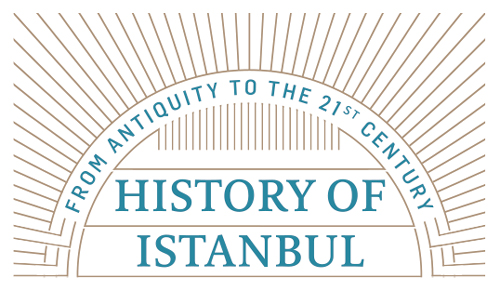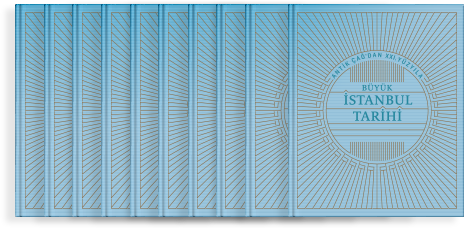The tradition of constructing hammams (bath-house) for the purpose of bathing with a heating system, as they are today, comes from the times of the Romans. The technique of heating-construction, by circulating hot air through the spaces created below floors and along walls of the building, developed by the Romans for the palace structures at first, began to be used for heating hammams in later periods as well. Though the Romans had constructed some other structures functioning as bathing places before, the hammams began to be widespread with the development of the abovementioned heating technique. A striking fact is also that the hammams were not only places of bathing for the Romans but they were also used as places for several functions such as sports, reading, resting and for entertainment.1 After the Romans, the hammam structures regained importance via Islamic cultures settling on the same lands. The great attention that Islam paid to hygiene led to the construction of a number of new hammams.
Despite the fact that the heating systems and some functional divisions of the hammams constructed on the Islamic geography had some similarities, they developed particular structural features in time. Accordingly, mosques and hammams might be defined among the structures peculiar to Islamic cities. Hammams were also constructed on the places of the Ottoman settlement as a continuum of the architectural cultures of the Roman and previous Islamic periods. Nevertheless, the hammams constructed during the Ottoman period, had much more in common with the hammam culture of the pre-Ottoman Islamic states than they had with Roman tradition.
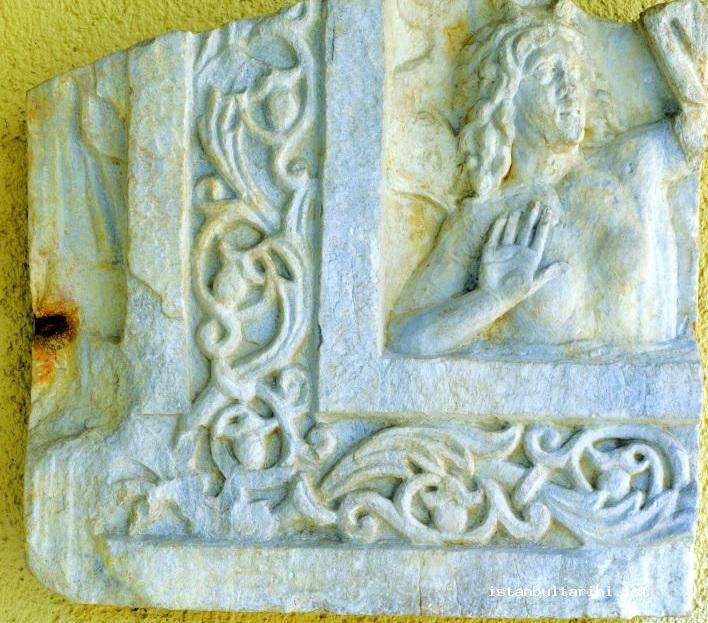
Hammam is the common name used for the places where people had bath with heated water. The root of the word “hamam (hammam)” in Turkish, borrowed from Arabic, is “hamm” meaning “heating, being warm”. The lexical meaning of the word is “the place which is heated”, used in the sense of “place for bathing”. The Persian counterpart of the word is “germâbe”. 2
Another structure resembling the hammam is the hot spring. The difference between hammams and hot springs is the existence of hot water pools within the latter. On the point of Istanbul, it is not much possible to talk about the existence of hot springs as there is no natural hot spring water. The non-existence of hot water springs led to the construction of hammams rather than hot spring resorts within the borders of the historical city, there is a hot spring still serving as a resort around Gebze in Istanbul though.
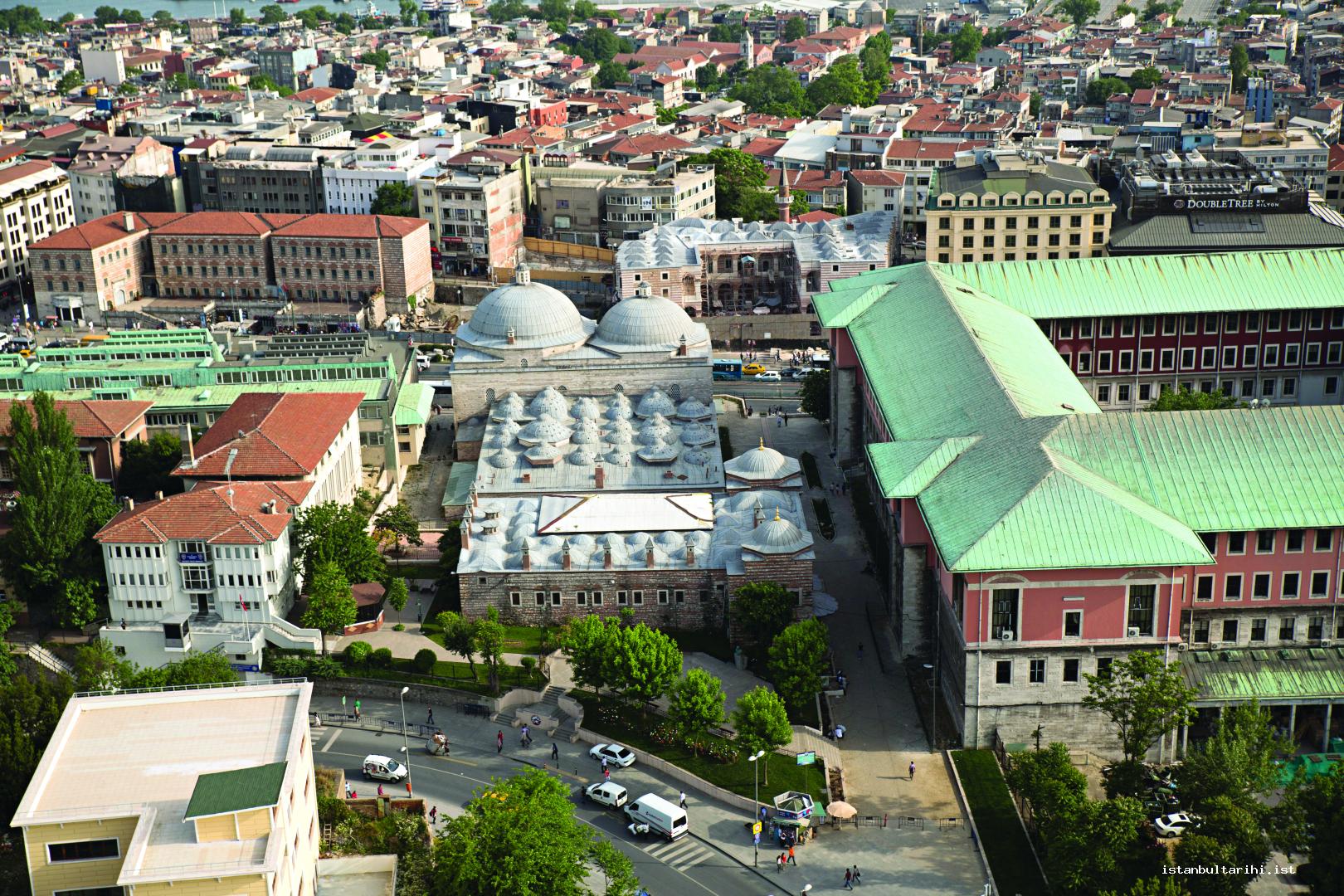
As for the architecture of Istanbul hammams, it is possible to talk about a distinction, stemming from the differences on the architectural structures of the Roman period (known as Eastern Rome or Byzantine in the later periods) and the Ottoman period. From a historical point of view, hammam buildings and its culture had a great importance on the daily life in Istanbul since the Roman, Byzantine and Ottoman periods. Despite the fact that names of the most hammams existing within the Byzantine Constantinople are known, little is known about their precise locations. It does not seem possible to get detailed information about their structures and functions from the data acquired as a result of the excavations. Nevertheless, as Müller-Wiener states, it is assumed that these structures had similarities with the Roman hammams which did not get through much change until fourth – seventh centuries3. Based on the resources on Byzantines, Semavi Eyice mentions hammams in different parts of the city, such as the Anastasius of the Region XI, the Arkadios of the Region I, the Dagisteos across the Ayia Amantasia Church, the Konstantinos Hammam of the Region X, the Hippodrome on the Region II, and the Zeuksippos Hammam around present-day Sultanahmet. These were the biggest and most flamboyant hammams of the city, and they were constructed during the period of the Roman Emperor, Septimus Sévèrus (193-211) and they were repaired during the period of the Emperor Constantinus (324-337).4 Müller-Wiener also mentions two hammams, the Konstantinianai Hammam, which was based in the area between the Bozdoğan Aqueduct and the Burmalı Minare Mosque, discovered during the excavations between the years 1955-1956 and were covered later on; and another hammam of the Byzantine period, which was constructed in the area close to the Kalenderhane Mosque and the Bozdoğan Aqueduct towards the end of the fourth century and the beginning of the fifth century.5 Similarly, Paul Magdalino also refers to the names and probable places of some other hammams such as Ta Dexiokratous Church and Hammam, the complex hammams situated outside the city walls of Konstantin around Ayvansaray Blakhernai Church and Ta Areobindou Hammam etc.6 During the Byzantine Period, in addition to the big public hammams offered for public use, hammams belonging to palaces and big houses, and a hammam constructed within the hospital of Pantokrator Monastery are also spoken about in the sources.7 Obviously, big hammams were constructed close to areas such as temples, churches or forums in the city.
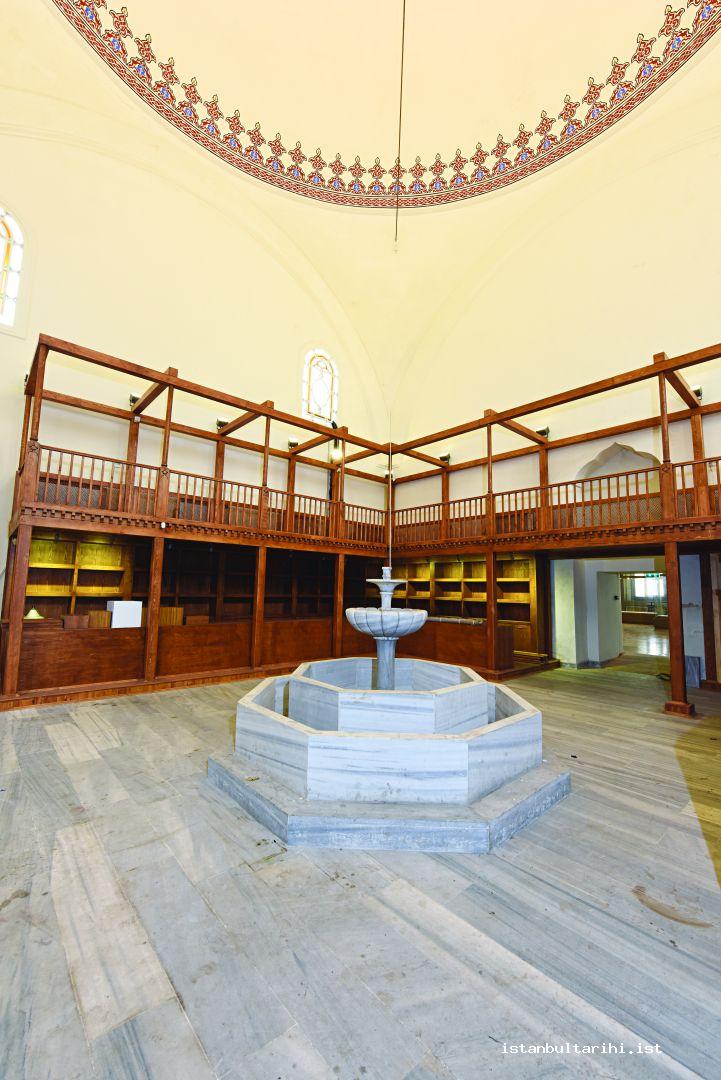
During this period, it was regarded as a profitable business to run hammams considering the fact that people who wanted to use the hammams needed to pay fees, and shops and apartments built next to the hammams provided high renting incomes to their owners. On the other hand, it is also known that the Byzantine Church had a negative attitude towards the hammams, regarding them as too luxurious, and earthly. It is also stated that during the periods when hammams decreased in number as a result of the pressure of the church, scarcity of water and some other economic reasons, some of the hammams were closed and the remaining ones were turned into structures called “lousma”, which were run by “diakonia”, a kind of church foundation. In these periods, “thermae”, known as public hammams were abandoned, became functionless; nevertheless, hammams in palaces and private houses continued to exist.8 None of these hammams, with the exception of some remnants, have reached the present day, which might be due to several factors among which we may count the reasons mentioned above, and the fact that other hammam structures were constructed on the existing hammams during the Ottoman period. Semavi Eyice asserts that the Çardaklı Hammam close to the Little Haghia Sophia Mosque and the Koğacılar Hammam, which did not reach the present day, were constructed partially based on the Byzantine hammams.9
Following the conquest of Istanbul, numerous hammams were constructed. The increase in the number of hammams continued till the XIX century in relation to the population growth. With the transportation of water within the structures and the solving of relevant technical problems, private baths began to be built in the houses of individuals. During the nineteenth century, a few new hammams were constructed, and some of the existing ones were abandoned and new structures were built upon some others.
It is well known that Islamic-Ottoman social complexes (külliye), with a number of functions such as mosques, masjids, hammams etc. constructed through the channels of foundations in relation to the Ottoman architectural tradition, had a great importance in the development of Istanbul. Within this perspective, hammams were indispensable structures of these social complexes. That the spatial structuring functioning as bathing places was not enough in the houses, and the demand for getting service of bathing in well-heated places especially in the winter led to the construction of hammams and increased their number. Semavi Eyice, on the other hand, asserts that these hammams provided high incomes to the foundations, and they drew the attention of the communities towards the mosques nearby, and this was the reason behind the increases in numbers.10 Considering the previous studies, researchers have made comments on the population density and distribution in the city by looking at the numbers and the locations of the new and existing hammams.
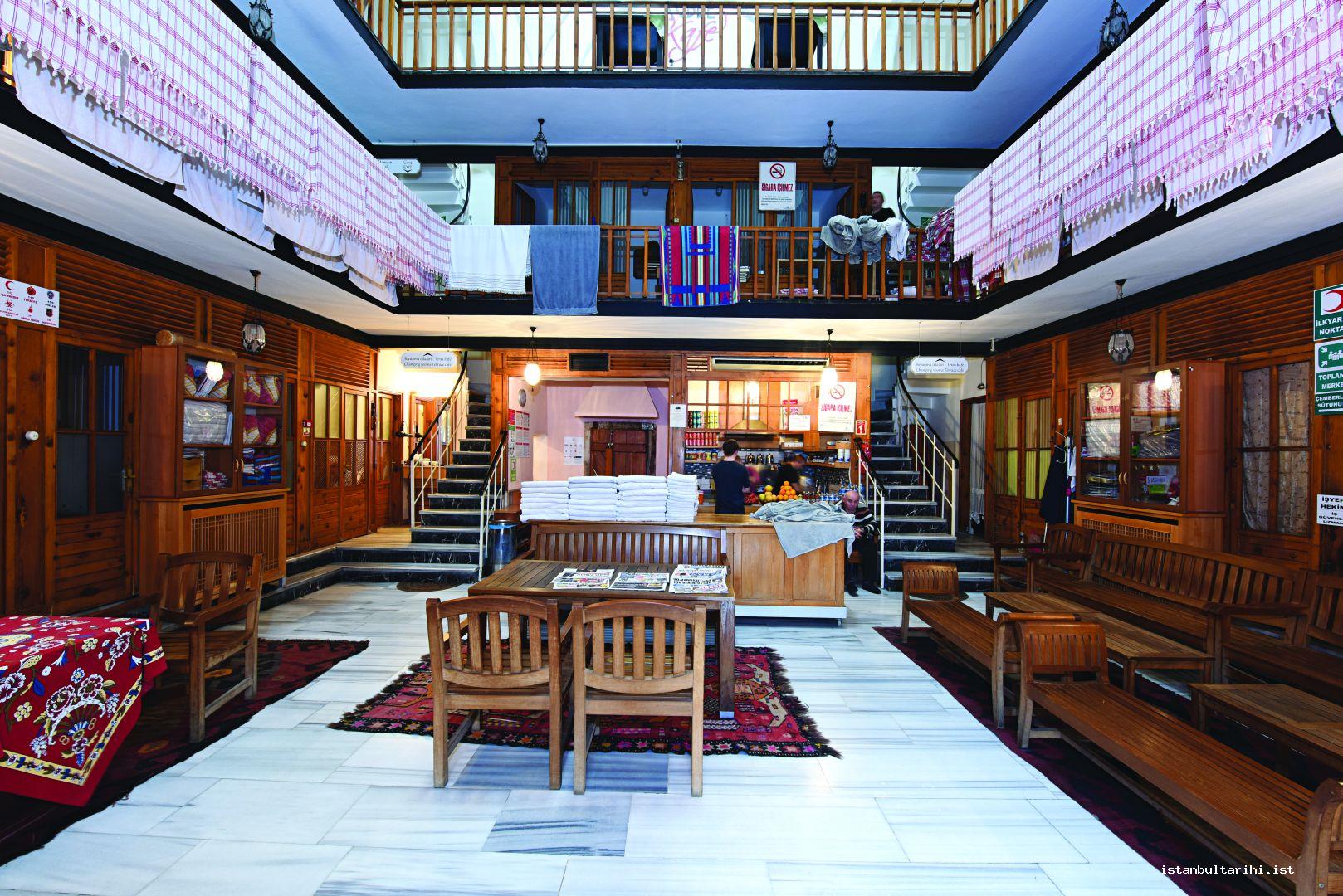
It is also assumed that the first hammam constructed in Istanbul during the Ottoman era was the Irgat Hammam, commissioned by Mehmed II the Conqueror, which was followed by the Azebler Hammam, the Vefa Hammam, the Eyüp Hammam and the Çukur Hammam. During the period of the Mehmed II the Conqueror, all the viziers commissioned either new social complexes, or turned existing Byzantine churches into mosques and added new structures such as hammam, madrasas, imarets etc. and contributed greatly to the construction process of the city. First hammams in Istanbul in the Ottoman period emerged in this way, among which are the Aksaray Murat Paşa Social Complex Hammam, the Davut Paşa Harbor Hammam, the Üsküdar Rum Mehmet Paşa Hammam, the Gedikpaşa Hammam, and the Mahmut Paşa Hammam. Among these hammams, Mahmut Paşa Hammam was designed as a double hammam (separate baths for men and women) and only the part for the males segregated hammam remains today. The changing room of the hammam is covered with a dome on large squinches with stalactite. It has a warm design with small domes in the octagon form, each of which was particularly embellished. This hammam is the oldest hammam with an epitaph in Istanbul. During the fifteenth century, in addition to these hammams, the Akbıyık Hammam, the Acemioğlanlar Hammam, the Balat Kapısı (Tahta Minare) Hammam, the Bostan Hammam, the Kadıasker Hammam, the Kazlıçeşme Hammam, the Tahtakale Hammam, the Tophane Kapısı Hammam, the Yedikule Hammam, the Yeşildirek Hammam, and the Yıldız Hammam were constructed. The Hacı Kadın Hammam, which was built immediately after the conquest, was turned into a double hammam with the addition of the part for females. The domes of the part segregated for males of this hammam were plastered with the malakari technique, used in the hammams of Bursa and Edirne beforehand, and it is among some of the unique examples that has made it to the present day as is the Beyazıt Hammam.
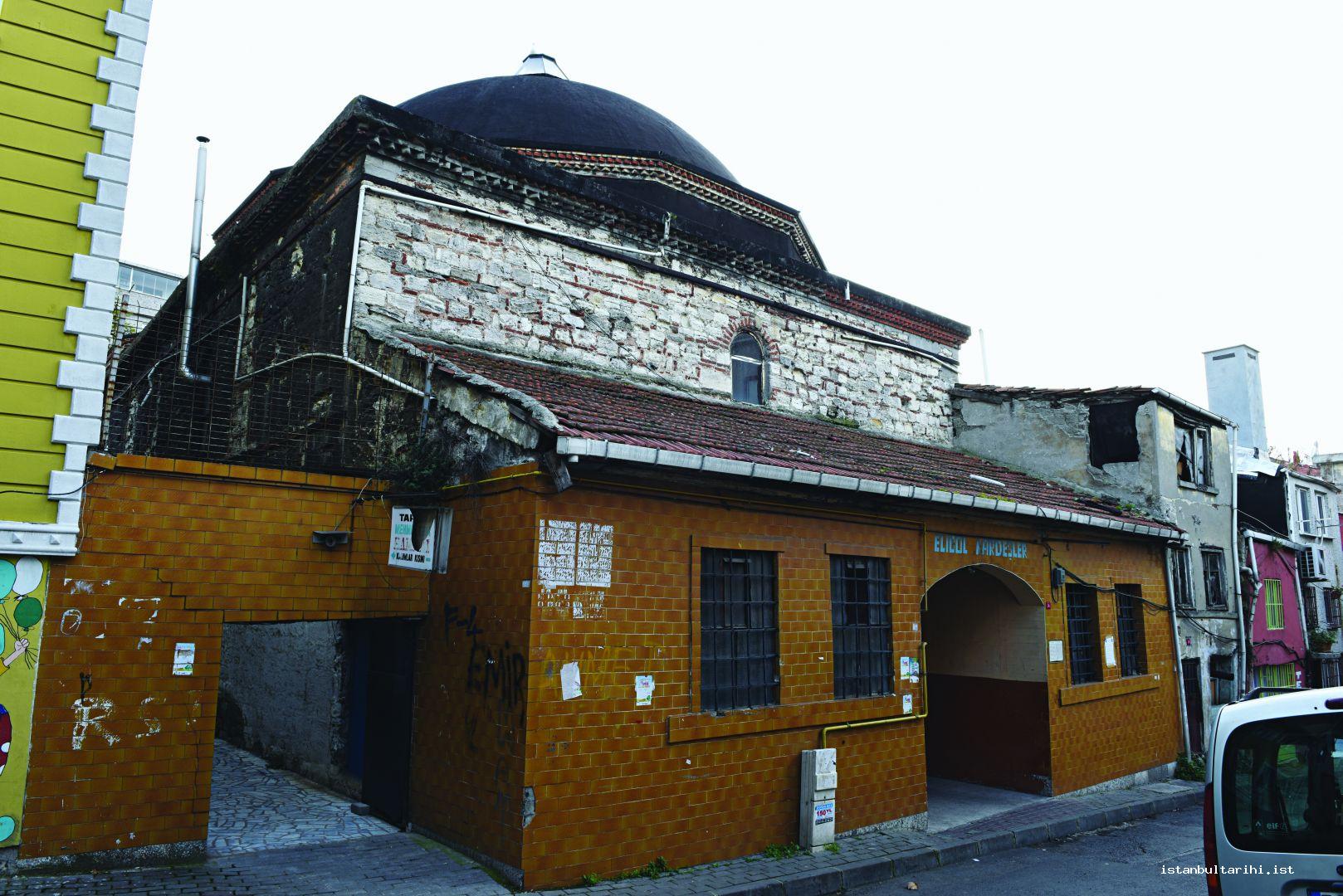
During the end of the fifteenth century and the beginning of the sixteenth century, the periods of Bayezid II, and Selim I were also rich with respect to construction operations. During this period, the Merdivenli Hammam, the Küçük Mustafa Paşa Hammam, the İbrahim Paşa Hammam, the former Ali Paşa Hammam, the Üsküplü Hammam, the Çardaklı Hammam, the Galatasaray Hammam, the İmrahor (Langa) Hammam, the Kocamustafa Paşa (Sümbül Efendi) Hammam, the Piri Mehmet Paşa Hammam, the Havuzlu Hamam, the Nişanca Hammam and the Beyazıt Hammam were built.11 Beyazıt Hammam, constructed during the Bayezid II as a part of the social complex, was designed as a double hammam and presents a monumental structure with the dome of its changing room, the height of which is approximately fifteen meters. The Bayezit, or with its common use the Beyazıt Hammam (Patrona Halil Hammam) has been situated in a significant location of the city since the Byzantine period. It is among the most flamboyant hammams constructed in Istanbul during the Ottoman period. As stated before, the understructure of the Çardaklı Hammam, which was commissioned by Kapıağası (Chief Eunuch) Hüseyin Ağa, is claimed to belong to the Byzantine period. Especially, the cross-like designation of the hot room of the men’s part seems to support this claim.
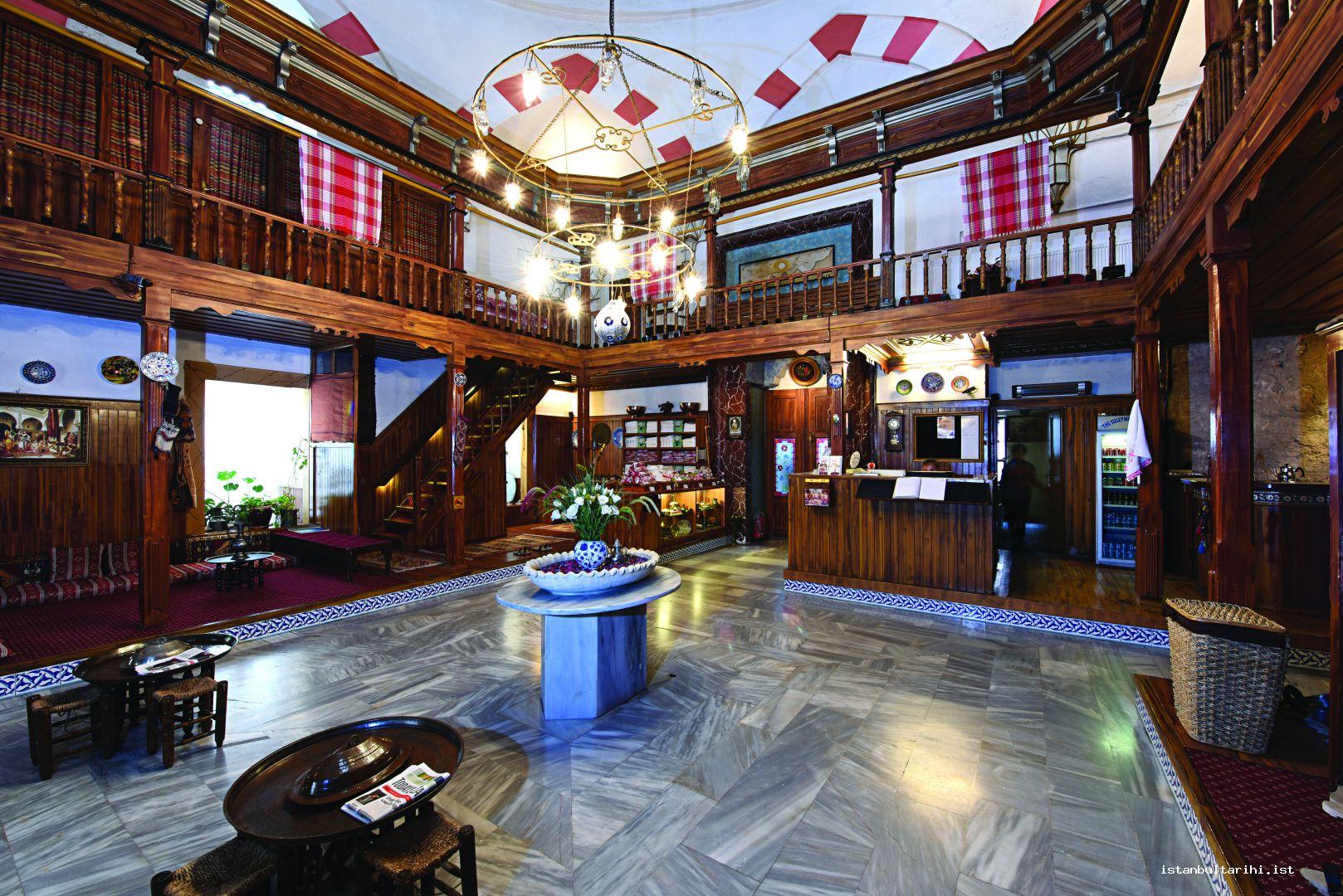
It is stated that during the reign of the Süleyman I the Magnificent (1520-1566), due to the population growth in Istanbul, water resources became scarce; and thus some of the hammams within the city walls were deconstructed. During the period when Mimar Sinan (Great Sinan) was the chief of the architects, following the construction of the Kırkçeşme water supply lines, numerous new hammams were constructed. In relation to the increased construction operations in the sixteenth century especially during the period of Mimar Sinan, 59 new hammams were constructed across the empire; and it is stated in the bibliography collections that 45 of them were built within or nearby Istanbul.12 Among the prominent ones are the Çinili Hammam, the Dökmeciler Hammam, the İbrahim Paşa Hammam, the Sinan Paşa Hammam, the Ayasofya (Haghia Sophia) (Haseki) Hammam, the Piyale Pasha Hammam, the Edirnekapı Mihrimah Sultan Hammam, the Atik Valide Hammam, the Ayakapı Hammam, the Kılıç Ali Paşa Hammam, the Hacı Evhat Hammam, the Mehmet Ağa Hammam, the Fındıklı Molla Çelebi Hammam, the Haseki Hammam, the Kapıağası Hammam, the Macuncu Hammam, the Nişancı Hammam, the Merkez Efendi Hammam, the Sarıgüzel Hammam, the Haydar Hammam, and the Yenibahçe Koca Mustafa Paşa Hammam.
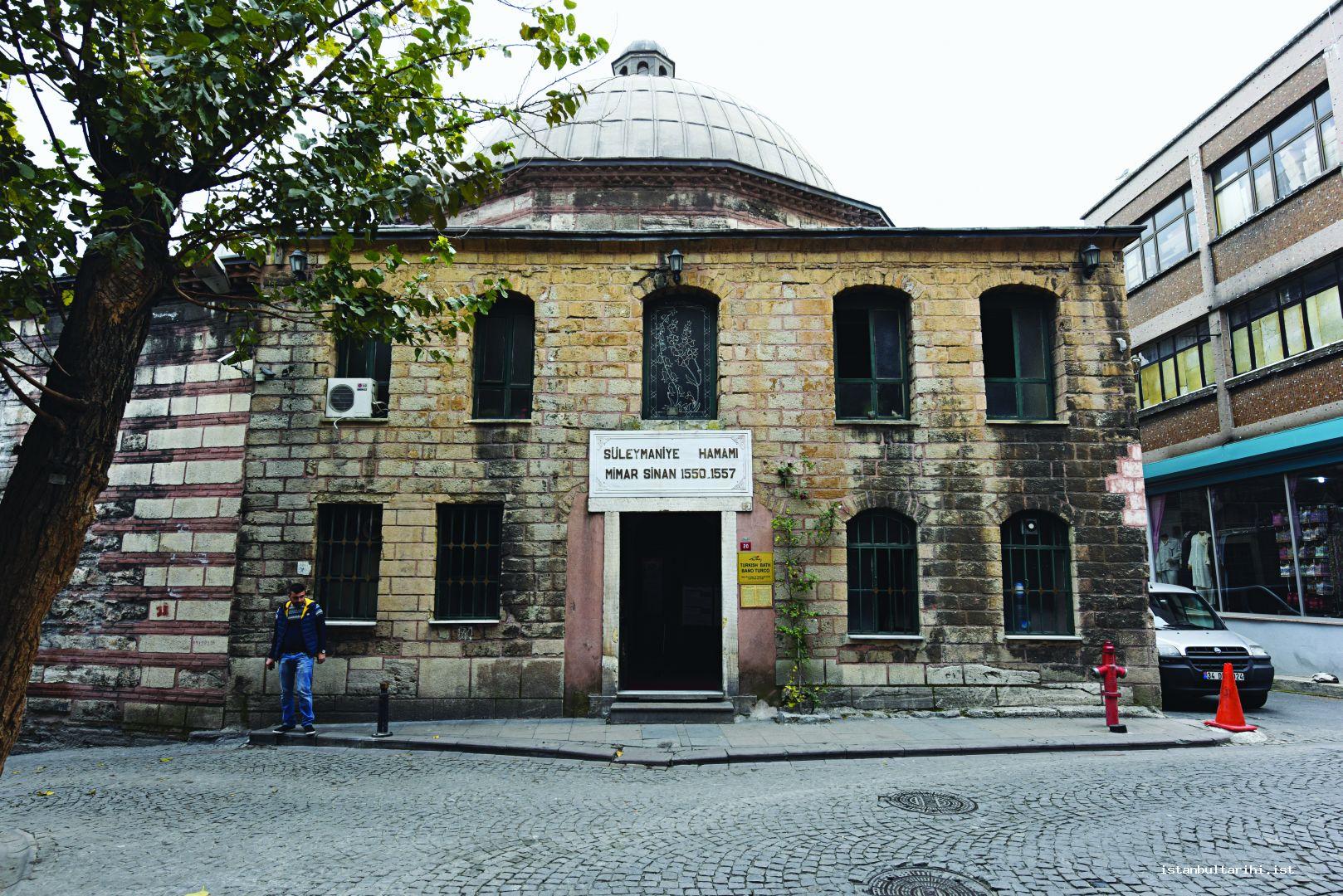
As well as in keeping with the general architectural traditions of the previous periods, Mimar Sinan also applied different techniques to the hammams he designed. Among these new techniques was the application of central heating area in the Azapkapı Sokullu Hammam and the Süleymaniye Complex Hammam, and this technique was not applied later on. In addition, the monumental entrances of the Süleymaniye and the Sultanahmet Haseki Hürrem Sultan Hammams with their embellished porticoes are also among the examples of Mimar Sinan’s innovative applications. The other unique design of Mimar Sinan was the longitudinal planning with entrance from both edges, placing male and female parts on each side and with külhan (grate room) in the middle. The Haseki Hürrem Sultan Hammam and the Haydar Hammam in Sultanahmet present examples of this kind of hammam designation.
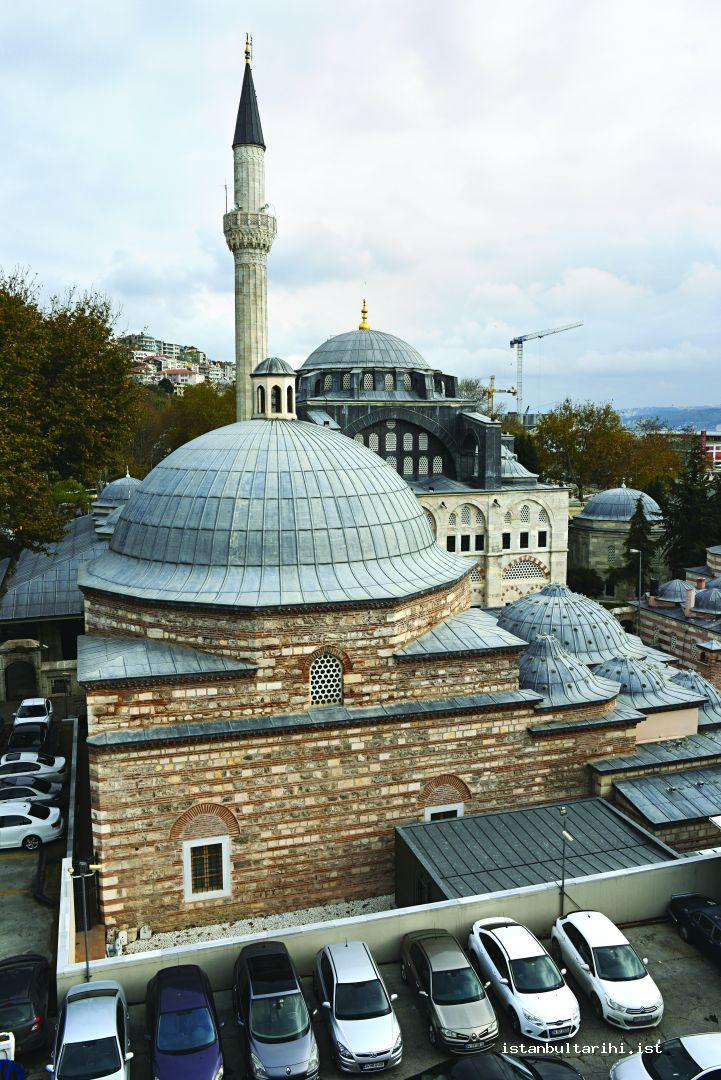
Among the remarkable hammams in the sixteenth century are the Cerrah Mehmet Paşa Hammam, the Tatlısu (Acımusluk) Hammam, the Çemberlitaş Hammam, the Kızlarağası Hammam, and the Ayvansaray Arabacılar (Yatağan) Hammam. Though hammam construction continued after the period of Mimar Sinan, none of them presented such monumental features as the ones designed by Sinan.
Among the hammams built during the seventeenth century are the Sofular Hammam, Hançerli Hammam, the Kadırga Limanı Hammam, the Zincirlikuyu Hammam, the Draman Hammam, the Tahta Minare Hammam, the Üsküdar Çinili Hammam and the Küçük Ağa Hammam. It is possible to argue that hammam construction decreased during the fifteenth and sixteenth centuries, and their designs did not display much monumental qualities.
Coming to the eighteenth century, the Cağaloğlu and the Beylerbeyi Hammams could be listed among the most significant hammams after the classical period. As population growth increased the number of hammams, the consumption of wood and water was brought under control with an edict enacted in the eighteenth century.
In the nineteenth century, the Üsküdar Selimiye Hammam (1801), the İcadiye Dağ Hammam (1854) and the Altunizade İsmail Paşa Hammam (1865) were constructed in addition to the existing hammams in the city. Along with displaying traditional hammam planning techniques, the hammams constructed in this period were also embellished in accordance with the dominant Western architectural trends of the period. It is possible to find traces of baroque, ampir and rokoko styles in the structures such as fountains, pools, basins etc. of the hammams.
Types of Hammams
The hammams, built in Ottoman Istanbul, were planned as parts of the social complexes of a variety of sizes. The public hammams accessible to anyone were generally constructed as properties of foundations. Nevertheless, some of them were turned into private properties of individuals via disappropriation /sale in the following periods that was the way a number of hammams became private property today. Istanbul hammams, as part of the Ottoman architectural tradition, bear certain similarities to those of the hamams in other cities of the empire with respect to their construction plans, ownership and architecture. Istanbul Hammams are named differently according to their places of construction: 1. Public Hammams, 2. Mansion/Dervish Lodge Hammams, 3. Palace Hammams, 4. Military Quarter Hammams, 5. School/Hospital Hammams, and 6. Sea Hammams.
Public Hammams
Most of the hammams constructed in Istanbul consists of structures called public hammam/ general hammam/ bazaar hammam. They were built as foundation properties and as parts of the architectural designs of the complexes or smaller structures. As their names suggest, these hammams were open to public use and were subject to nominal fees. On this point, Bahattin Yediyıldız expresses that hammams built for generating income to public institution were fee-charged, but there were also free of charge hammams for the poor.13 Public hammams were built in either single (male or female) or double (male and female) form in accordance with the structure of the land, its location or population density. Single gender hammams served both men and women on certain hours of the day. Double gender hammams had separate spatial arrangements for males and females. Though both parts were designed similarly with respect to their architectural structure, the direction of the door of the changing room and the height of the walls of the female parts displayed differences. We see this arrangement as keeping the male’s part bigger than the female’s part; while the entrance doors of the male’s part opened to the squares of main roads, the female’s part generally opened to side roads in consideration of privacy. In quite a few examples, the doors of both parts opened to the same street.14

Mansion/ Dervish Lodge Hammams
Hammams of the mansions, pavilions, military quarters, palaces, schools, hospitals and dervish lodges, which were also called private hammams, were open to a limited number of people. The structuring and the spatial extents of these hammams were determined on the basis of the number of the users, and they were mostly small-scale single hammams. These types of hammams were sometimes designed as detached structures, and they were sometimes built as subsidiary parts of bigger structures complexes. The number of these hammams was quite small compared to the public hammams, and they were generally designed similarly to public hammams and in some hammams, changing rooms and intermediate cool rooms were not constructed.
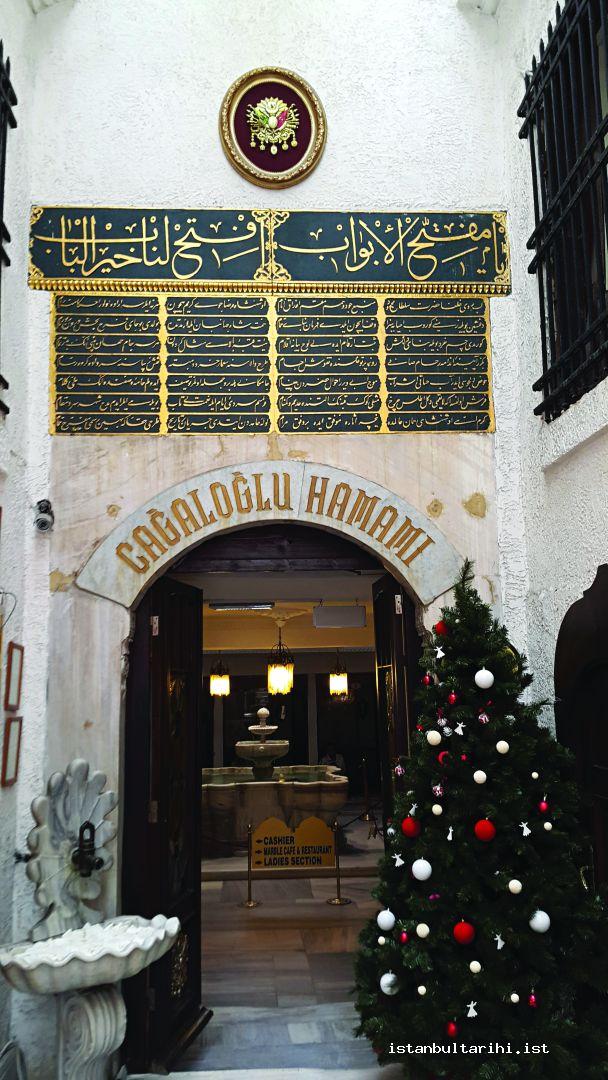
The mansion hammams were designed as detached structures within the gardens of big buildings such as mansions, sea mansions. These hammams were high in number in Istanbul and were generally designed together with these buildings. They were generally composed of two parts, a hot room and a changing room and were mostly located on one of the corners of the garden. The Esma Sultan Yalısı Hammam in Ortaköy, the Zarif Mustafa Paşa Sea Mansion Hammam, the Yusuf İzzeddin Efendi Mansion Hammam and the Murat V Av Köşkü (Hunting Lodge) Hammam (1870s) (Marmara University- Göztepe Campus) are the ones that first come to mind. Apart from them, it should be noted that almost all the pavilions and sea mansions had their own hammams. It is mentioned in some of the memoir records that some of the mansion and sea mansion hammams did not have any public hammams nearby and these hammams were opened for the use of the public from time to time. Despite the fact that construction of public hammams almost came to a standstill in the nineteenth century, in the developing districts of the city such as Boğaziçi, Çamlıca, Küplüce, Libadiye, Fenerbahçe and Kalamış, new mansions continued to be built with either detached hammams in their gardens or with bathroom-hammams on their basement floors. Other examples of private hammams are seen within the dervish lodges, which were designed as little social complexes. The hammam of Üsküdar Afganîler Dervish Lodge presents a beautiful example of such hammams, with its parts added in the restoration in the nineteenth century making it among the rare dervish lodge hammams, which has reached the present day.
Palace Hammams
Some of the palace hammams, which were used by the courtiers, have made it to the present day, whereas some of them have disappeared along with the palace structures they belonged to. There were the Hünkâr (Sultan) and the Valide (Sultana) Hammams, the Gözdeler (Favourites) Hammam, the Cariyeler (Concubine) Hammam, the Cariyeler Hastanesi (Hospital of the Conqubines) Hammam, the Murat III Hammam, the Kızlarağası (Chief Black Eunuch) Hammam and the Karaağalar Hammam, constructed in different periods of the time, within the Seraglio of the Topkapı Palace, functioning till the mid-nineteenth century. We do not have any information on the hammam of Üsküdar Palace, which is among the palaces which did not reach the present day. Similarly, the hammam of the Sadabad Palace also disappeared with the palace itself.
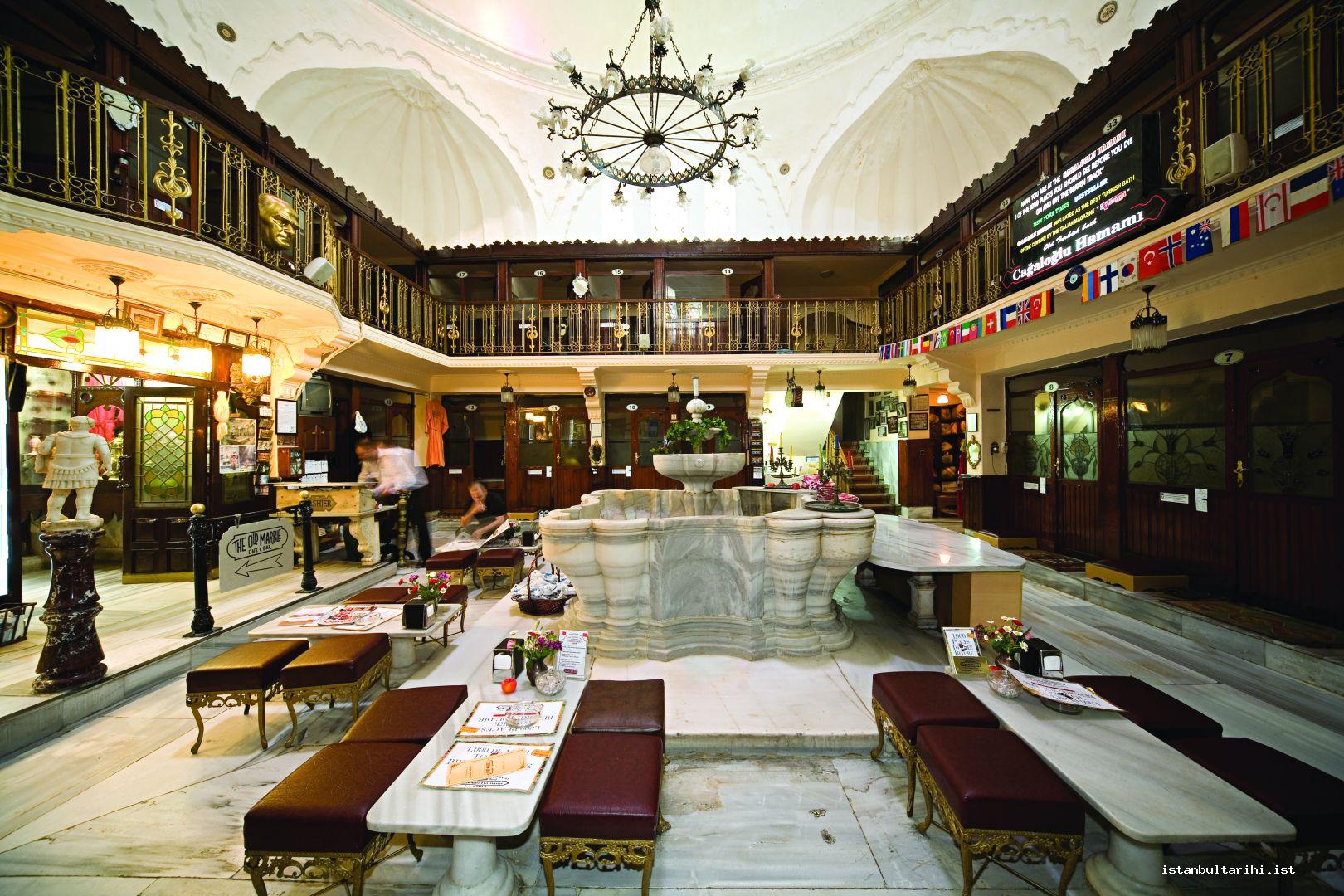
There were also Hünkâr (Sultan) Hammam, Çinili Hamam and Kadın Efendiler Çifte (Sultan’s Wives’ Double Gender) Hammam in the Dolmabahçe Palace, which began to be used in the mid-nineteenth century. Similarly, other palaces such as Yıldız, Beylerbeyi etc. also had their own hammams. Palace hammams were generally designed as parts of the palaces. The aim was to enable its users to reach the hammam without having to go outside the palace buildings.
Military Quarter (Kışla) Hammams
The tradition of constructing hammams within the military quarters for the personal hygiene of the soldiers dates back a long time in history. The Acemioğlanlar Hammam, which was first built as the hammam of the Janissary Troops located in Şehzadebaşı, is an example of these hammams constructed in Istanbul. With the abolition of the Janissary Quarter, the quarter was turned into a private property and its hammam was changed into a public hammam. It is assumed that the father of Hamamizade İsmail Dede Efendi, one of the prominent composers of Classical Turkish Art Music, ran this hammam; and thus, acquired his nickname “Hamamizade”, meaning “son of a hammam owner”. From the end of the eighteenth century with the attempts of modernization in the Ottoman army, new military quarters, schools and hospitals began to be constructed with a hammam. These new hammams, emerging as a result of the modernization attempts, were designed with a Western point of view; nevertheless, traditional hammam sites were also included in their structures, which were constructed within the buildings or their gardens. It is possible to list the Selimiye Kışlası (Military Quarter) Hammam, the Kuleli Askerî Lisesi (Military High School) Hammam, and the Gülhane Askerî Hastanesi (Military Hospital) Hammam among the examples of military quarter hammams.
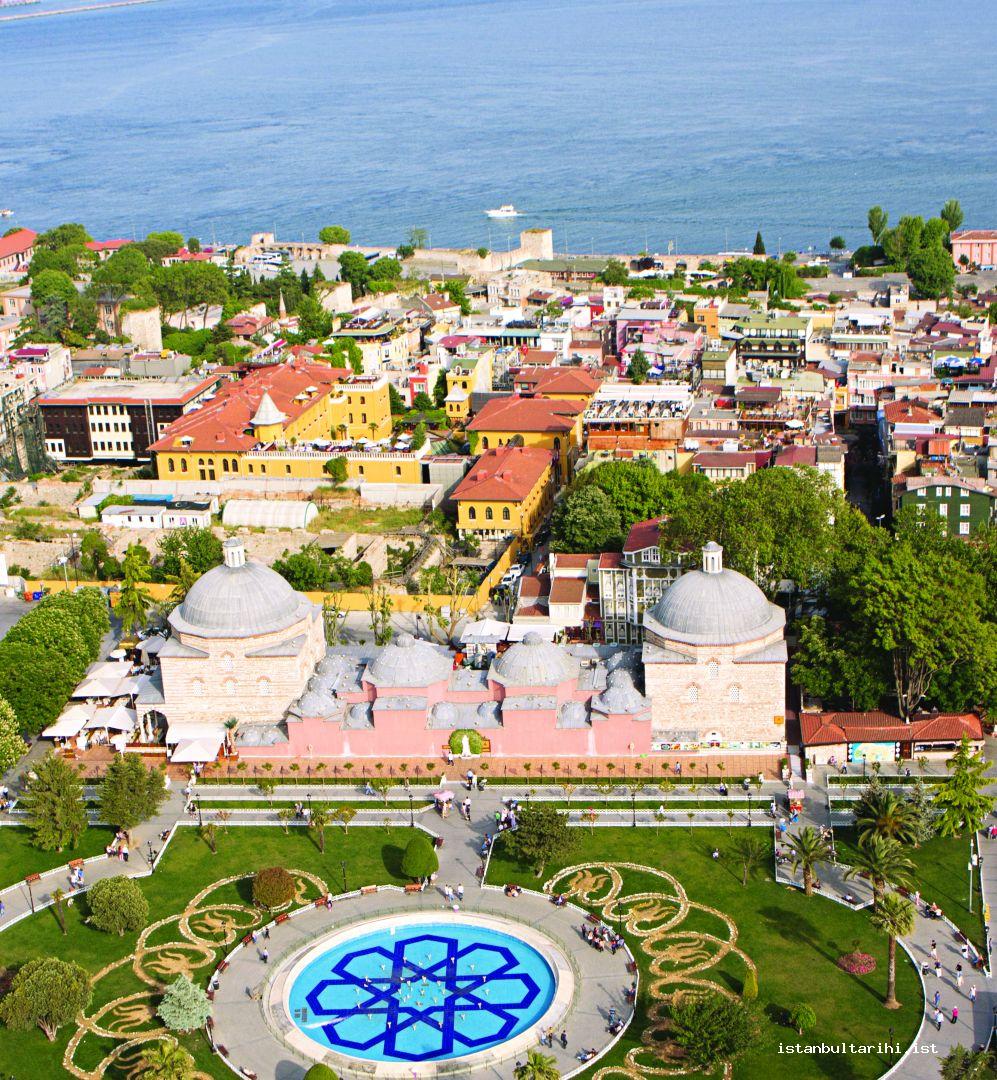
Sea Hammams
It should be noted that there were also sea hammams, which had a different function than traditional hammams, despite the fact that it consists of the word “hammam” within its title. Sea hammams were designed for people who could not benefit from the seas with concerns of privacy. Sea hammam was the name given to the structures, surrounded with walls and top of which was open. Though it is generally assumed that these structures began to be a part of the public life in the nineteenth century, there is also research claiming that these structures started to be used in the seventeenth, eighteenth centuries and became popular as from the nineteenth century.15
Spatial Arrangements and Construction Techniques of Hammams
Istanbul Hammams are structured in accordance with the Ottoman hammam tradition, and as a continuum of the Roman construction techniques of the pre-Ottoman periods. Within this context, they had similar arrangements with respect to technique and spatial sequence. In the hammam architectural design, the sequence of the parts might be listed in a fixed order as the changing room (soyunmalık), the cooling room (soğukluk), the hot room (sıcaklık) and the partially enclosed bathing cubicle (halvet), and the boiler room (külhan). This order continued to be applied with the improvement of architectural details and did not change much.
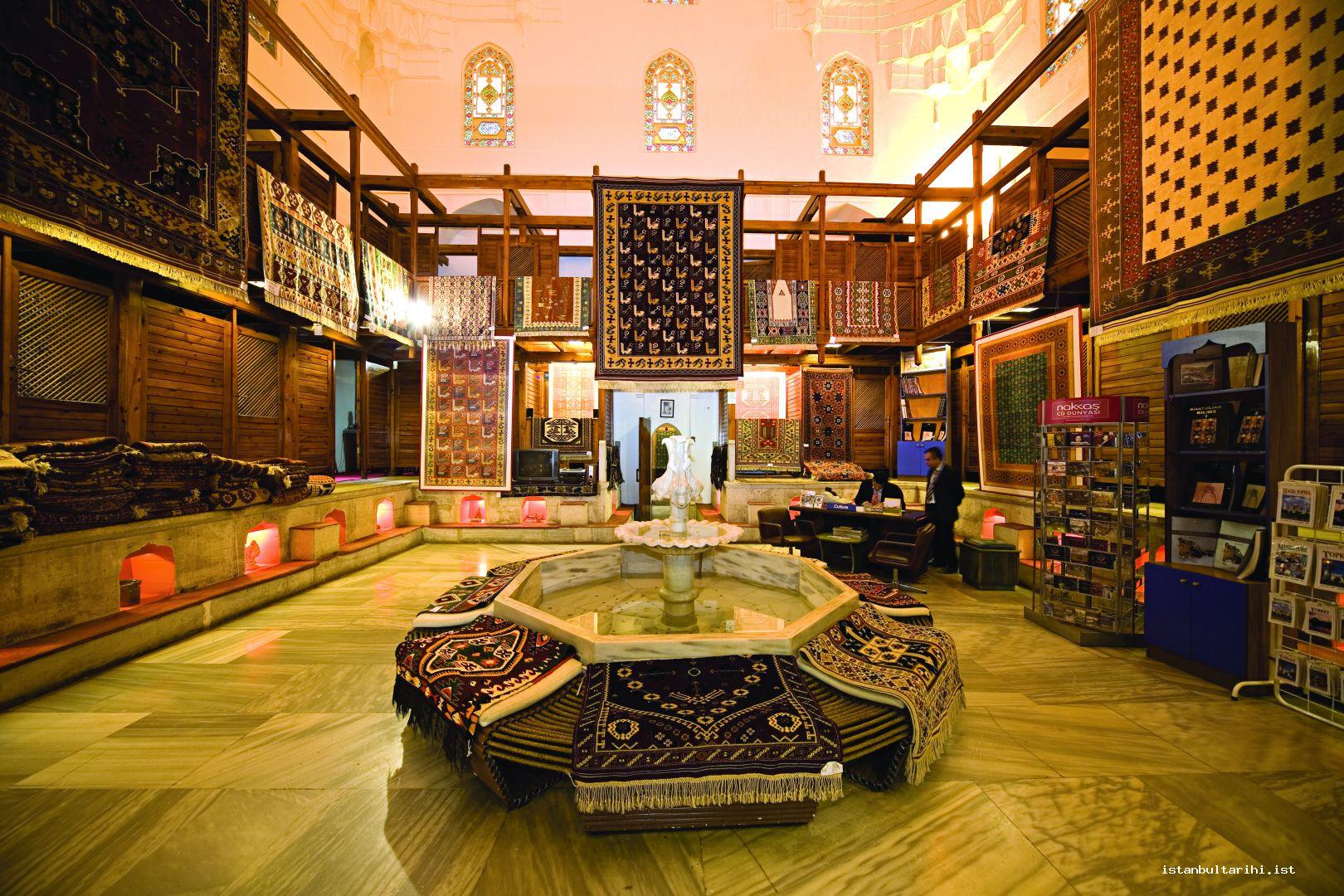
The biggest area of the hammams is generally the changing room, which is mostly equal to the total size of the cool and hot rooms. In some of the Istanbul hammams, the changing rooms constructed as domed masonry structures were built with wood in relatively smaller local hammams. Thus, there are no wooden changing rooms that have made it to the present day as their initial form as they went through several repairs and adjustments. Wooden changing rooms damaged in the fires were renewed in accordance with the architectural features of the periods, and as a result, the changing rooms renewed in the nineteenth century were built with additional ferroconcrete structures.
The cool rooms (ılıklık) were intermediate sections between hot rooms and changing rooms in the hammams. These cool rooms are also known as “soğukluk” (cold room) in some of the sources. A yashmac chimney was constructed on the door of the changing room so as to prevent the transmission of the steam into the hot room.16 The cool room is generally a transverse rectangular structure. In this part, there are marble sets, cleaning cells called “shaving room” (tıraşlık), and toilets with tunnel-like passages. The tops of the cool rooms were covered with vaults or domes and sometimes with both. The toilets were sometimes inserted into the main structures, and sometimes they were situated as additional parts.
One can enter into the hot rooms in the hammams, where the bathing is done, through the cool rooms with narrow and at most human-height doors. Though most of the hot rooms are accessed via iwans on the main axis, in some hammams such as the Süleymaniye and the Edirnekapı Mihrimah Sultan Hammams, the entrances are enabled through intermediate parts on the edge bathing cubicles.

The hot room is composed of a central dome, with a symmetrically arranged small bathing room called “halvet” (bathing cubicles) and iwans. In the center of the hot room, a large octagonal marble-stone table called göbek taşı (literally: tummy stone) is situated.
The külhan (grate room) is situated on the end edge of the hot rooms in Turkish hammams, behind the hot water storages with a variety of sizes, providing the heating of the hammam. It is where the fire is lighted, fuel is stored and the wastes are accumulated. Its entrance is situated at the back of the hammam, and its elevation is under the hammam floor, accessed via stairs. They are designed as circular structures resembling ovens with a variety of sizes, and a copper cauldron is placed on them. The copper cauldron with dome-shaped base enables the hot water storage to heat quickly. There are chimneys with a vaulted yashmac on their walls in front of the heater opening to the grate room. The chimneys are elevated till the dome-level to enable the steam to go out well.17
The hammams are heated with the circulation of the hot stream coming through the elevated structures under the hot rooms, halvet parts and cool rooms. The tunnels where the hot stream circulates are called “cehennemlik” (hypocaust). The pipes situated under the plasters on the vertical walls enabling the expurge of the air are called “tüteklik”. They also heat inner parts of the hammam. The raised floor system runs through the understructures of the hammam parts, except for the changing rooms.
Hammams of Istanbul traces the Ottoman architectural tradition in all respects from the structures to materials and construction techniques. Thanks to the fact that Istanbul was the capital city, all the opportunities of the construction tradition were used in the newly constructed hammams. It is possible to state that the attention paid to other structures of the capital was also paid to the hammams. It is clear that the most developed examples of Ottoman hammams were constructed in Istanbul. The hammams were generally built in accordance with the opportunities of the constructor foundation or the individuals with relatively expensive materials and ornaments of their period.
The water needed in the hammams was either carried or provided through water wells dug close to the hammams. During the Ottoman period, several constructions were carried out so as to enhance the amount of water brought to the city via aqueducts built by Mimar Sinan as in the Byzantine period; the water collected in the reservoirs and carried through these aqueducts was also used for the hammams along with other areas. In cases of the scarcity of water, the water resources of the Istanbul hammams were water storages of the hammams or the wells dug on the same directions as grate rooms were situated. Among the examples of this kind of wells where the water was carried via a mechanism working with animal power are the Beyazıt Hammam and the Merkez Efendi Hammam. It is known that the hammams are heated via the circulation of hot air through the walls and under the floorings since the Roman period. During the construction of the hammams, it was regarded as a technical requirement to construct the mechanisms for the heating of the structure and the storage of the water. Technical experiences acquired during the construction of the hammams in the previous periods were used in the new hammams. Exterior walls of the hammams were constructed with face stones or rubble stone depending on the financial conditions of the constructor, and the hot air and water circulation mechanisms were installed within the walls. The grounds of the hammams were designed with raised flooring system. That hammams were closed to the exterior world due to the heating difficulties, led the constructors pay particular attention to the interior decoration of the hammams, constructed especially till the sixteenth century. It is possible to examine examples of designs, such as luminaries on the top covers, niches, a variety of malakâri art techniques, and tile panels in hammams.
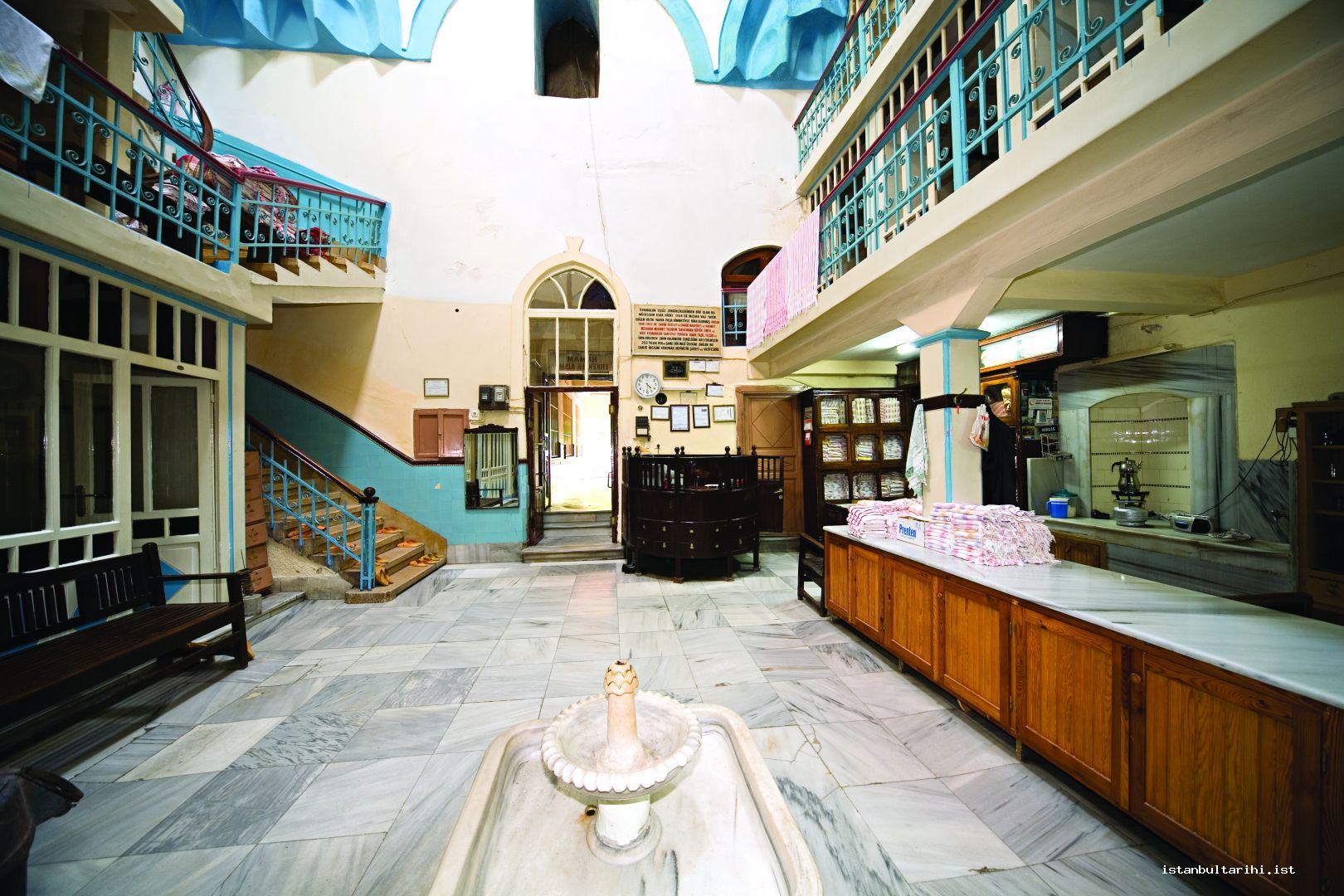
As a result of their structures close to the exterior world, the lightings necessary for all the parts of the hammam from the changing rooms to the hot rooms were done through the top cover. The lighting lanterns in the changing rooms and lightings called “elephant eye” built with particular glasses in the bathing parts served this function.
Typological Features:
Considering the architectural development of the hammams from the Roman to the Ottoman period, it is possible to state that there are resemblances among them. Though the planning schema of the Anatolian Turkish hammams remained the same throughout centuries, considerable differentiations were observed in their architectural constructions and details thanks to the technological developments and new materials.18 Similar differentiations can also be observed in Istanbul hammams constructed throughout the centuries.
Architects, designing the hammams, had also tried different designations in their plans. Sometimes, these differences derived from the difficulties of the lands that the hammams were built upon. In the construction of a hammam, the priority is its heating infrastructure. It is understood that during the construction of hammams, this was highly taken into consideration. It is observable that Ottoman architecture, which matured with its construction experiences in especially Bursa and Edirne, led to new hammam constructions in Istanbul, in accordance with symmetric planning and with hot rooms of four-iwans schema.19
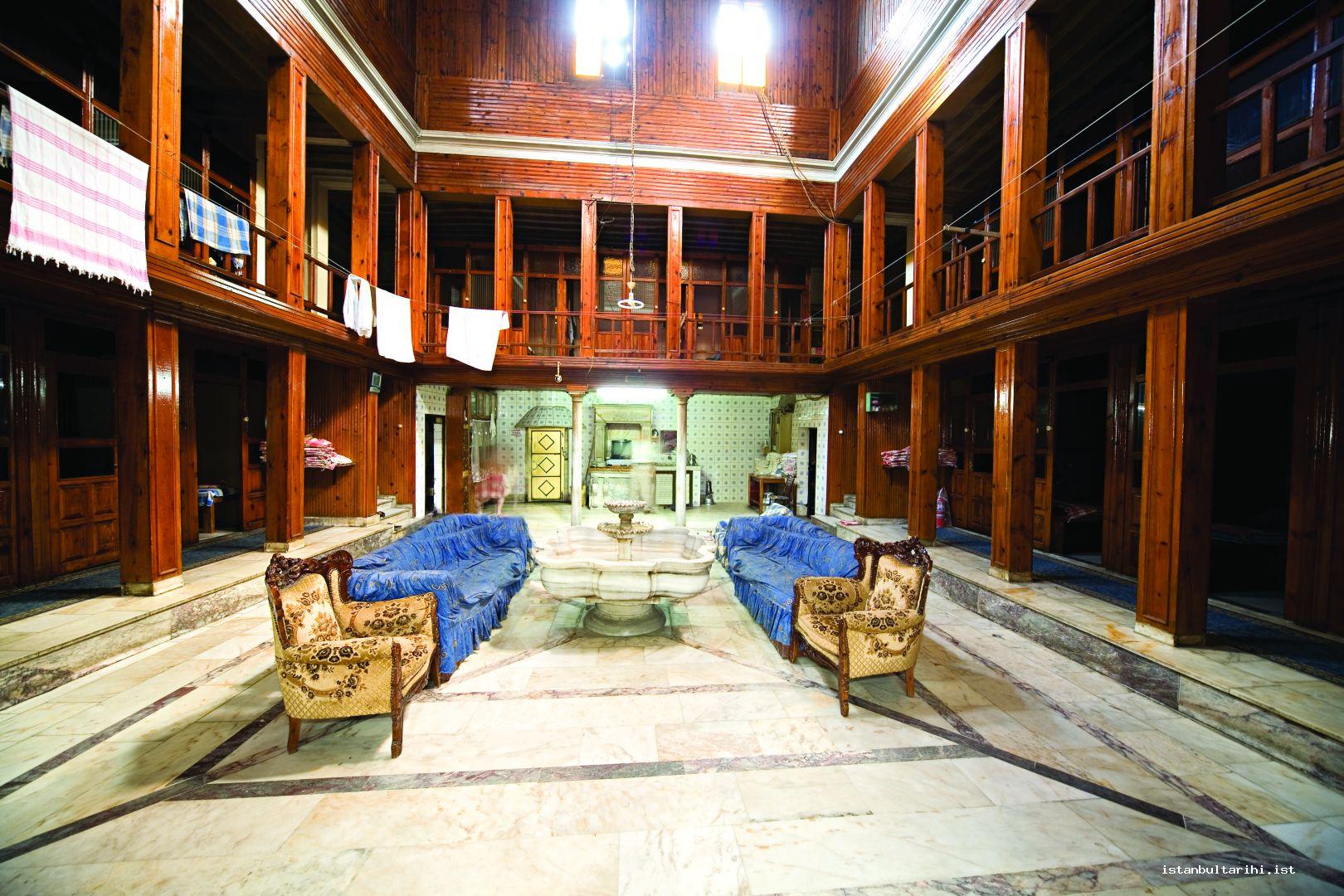
Researchers on hammams have preferred to classify hammams with respect to their historical development and change. The most commonly accepted classification is the one put forth by Semavi Eyice.20 Eyice, states that it would be more appropriate to make the classification according to their heating. Yılmaz Önge also agrees with Semavi Eyice, and expresses that as all the hammam heatings were dependent on the axial and radial schemas, classification of Turkish hammam architectural design is to be done on the basis of the composition of the hot room.21
The same method of classification as the one used for different regions of Ottoman geography could also be used for Istanbul hammams. Nevertheless, these kinds of classification methods might also bring about problems in defining hybrid structures requiring intermediate solutions and/or with additional parts in different periods. Thus, those typology and classification methods make it easier to understand the structures and to appreciate them, but the problem should be kept in mind that one method might not have been enough to cover the whole hammam structuring. As an example, Aksaray Sofular Hammam bears the features of type A and B heating plans, and its typologic planning is not precisely determined.
To clarify, generally hammams are classified under six headings on the basis of the hot room designs. Accordingly, Istanbul hammams might also be classified as follows:
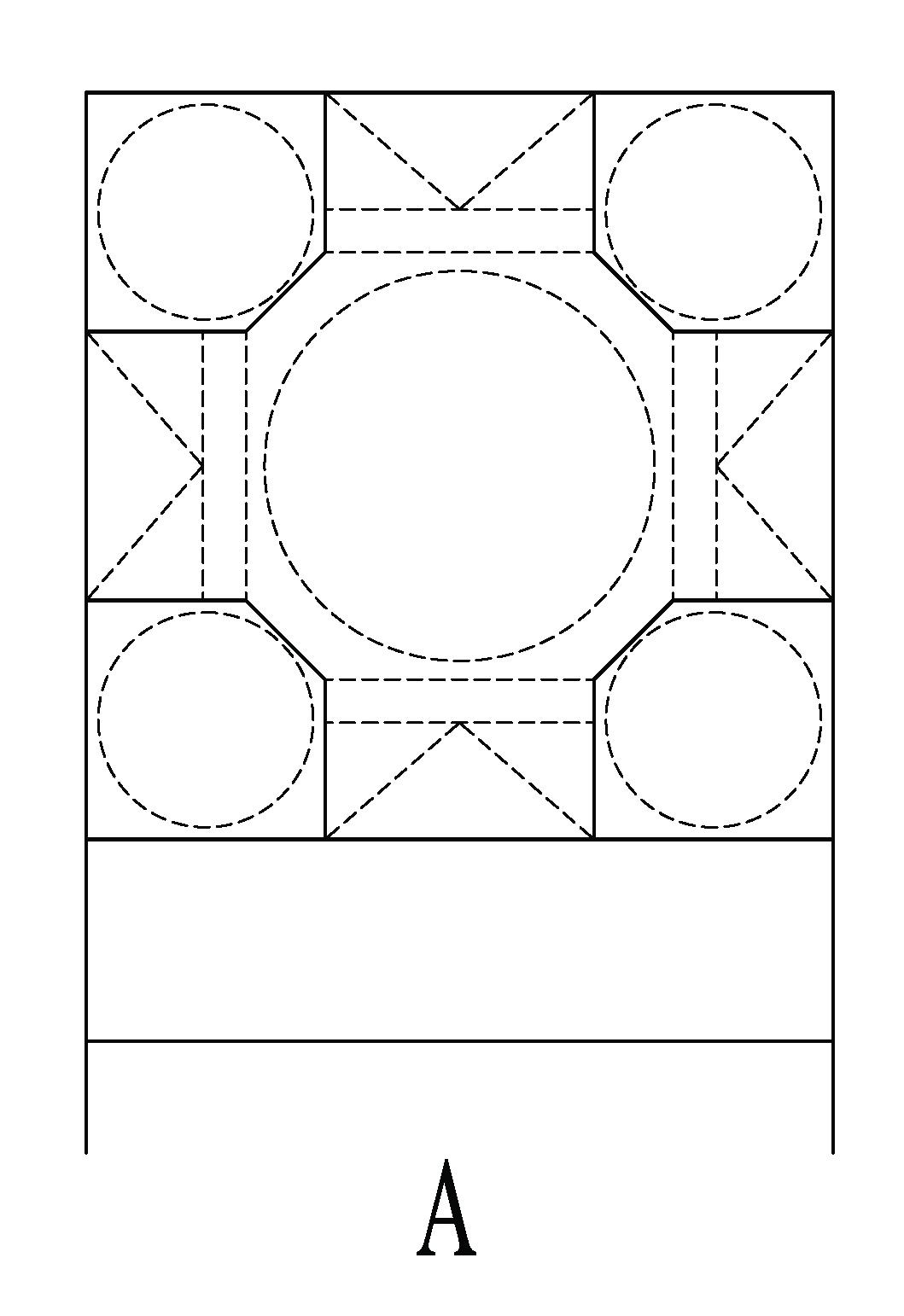
Type A: Cross-shaped Hot Room with Four Iwans and Corner Loggias (A):
This is a classical four-iwans design, which was also used in the architecture of madrasas, mosques, dervish lodges and houses, inspired directly by old Turkish architecture. The hot room with a dome in the center is reached through cool room. There are halvet cells in the corners of the hot rooms opening with vaulted iwans to all sides. The features of this type of hammams vary from three or two halvet cells and one, two or three iwans depending on the sizes and locations of the hammam. There are also hammams with one halvet cell, though quite small in number. As their plan looks like a cross, they are also known as “cross-shaped plan”.22 It is possible to come across advanced examples of this type of planning in the twelfth century hammams.23
Among the most beautiful examples of this type of hammams in İstanbul are the Beyazıt Hammam, the Murat Paşa Hammam, the Edirnekapı Mihrimah, the Sultan Hammam, the Langa Hammam, the Kızlarağası Hammam, the Tahta Minare Hammam, the Samatya Ağa Hammam, the men’s part of the Çukur Hamam, the Gedikpaşa Hammam, the Hocapaşa Hammam, the Çinili Hamam, the Haseki Hürrem Sultan Hammam and the Süleymaniye Hammam.
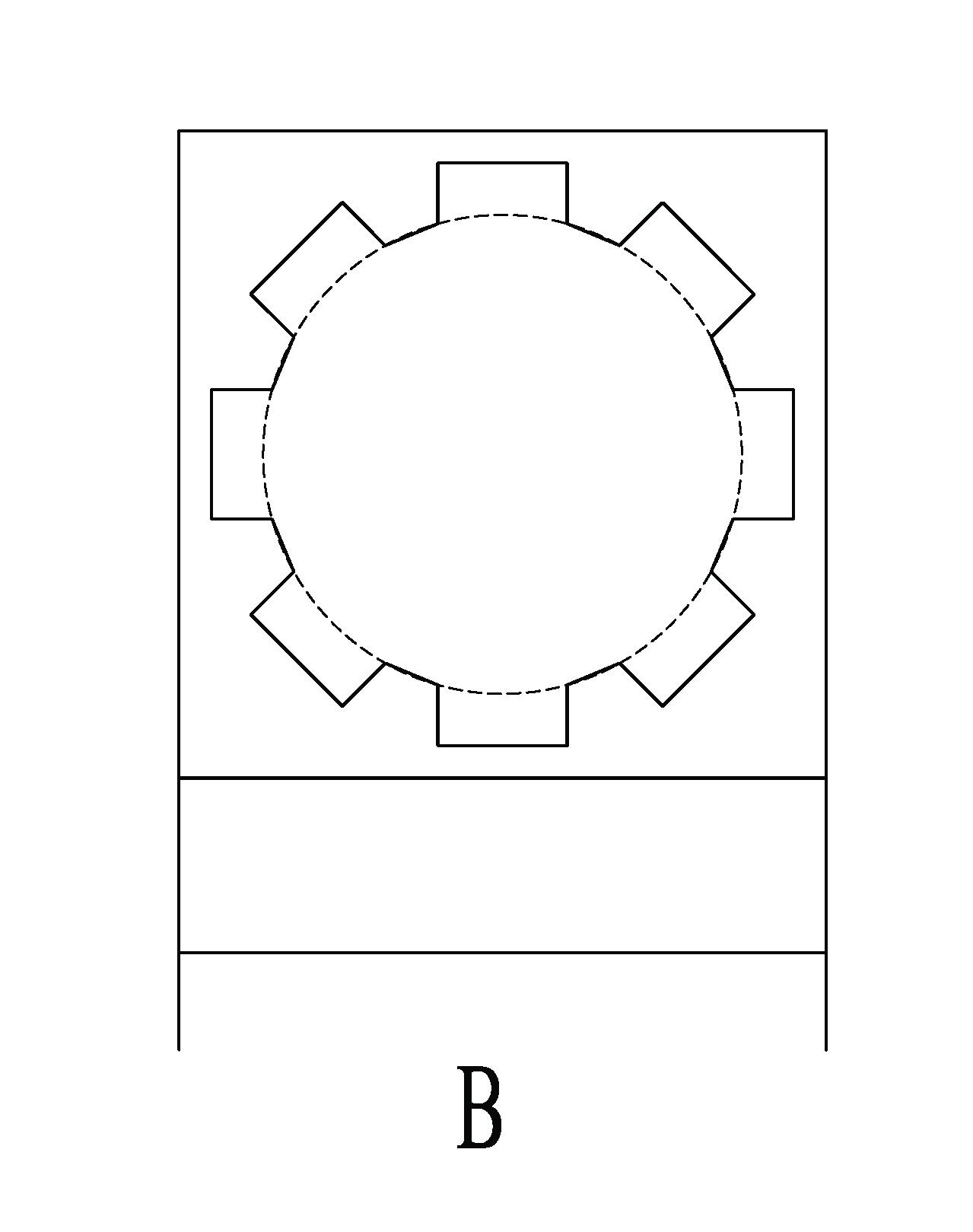
Type (B): Star-shaped Hot Room
This type of hammams with star-shaped hot rooms, which are thought to be inspired by hot springs and hammams of the ancient periods in Anatolia, have sextet, septette or octagon shaped vaulted niches, general bathing parts around the göbek taşı (marble stone).24 Among the examples of this type of hammams are the women’s part of the Ayasofya Çardaklı Hammam, the Çukur Hammam, the remaining men’s part of the Mahmutpaşa Hammam and the Kılıç Ali Paşa Hammam by Mimar Sinan as well as the Çemberlitaş Hammam as a different variation of this type.

Type (C): Square Hot Room with Halvet Cells around
In this type of design, which is plainer and simpler compared to the first two types, there is a rectangular or square hot room, along with halvet cells, lining up around one, two or three corners of the center. There are a few examples of this plan. The women’s part of the Tahtakale Hammam, which is among the waqfs of the Mehmed II, the Conqueror, and the Beyoğlu Bahçeli Hammam might be given as examples of this type.25
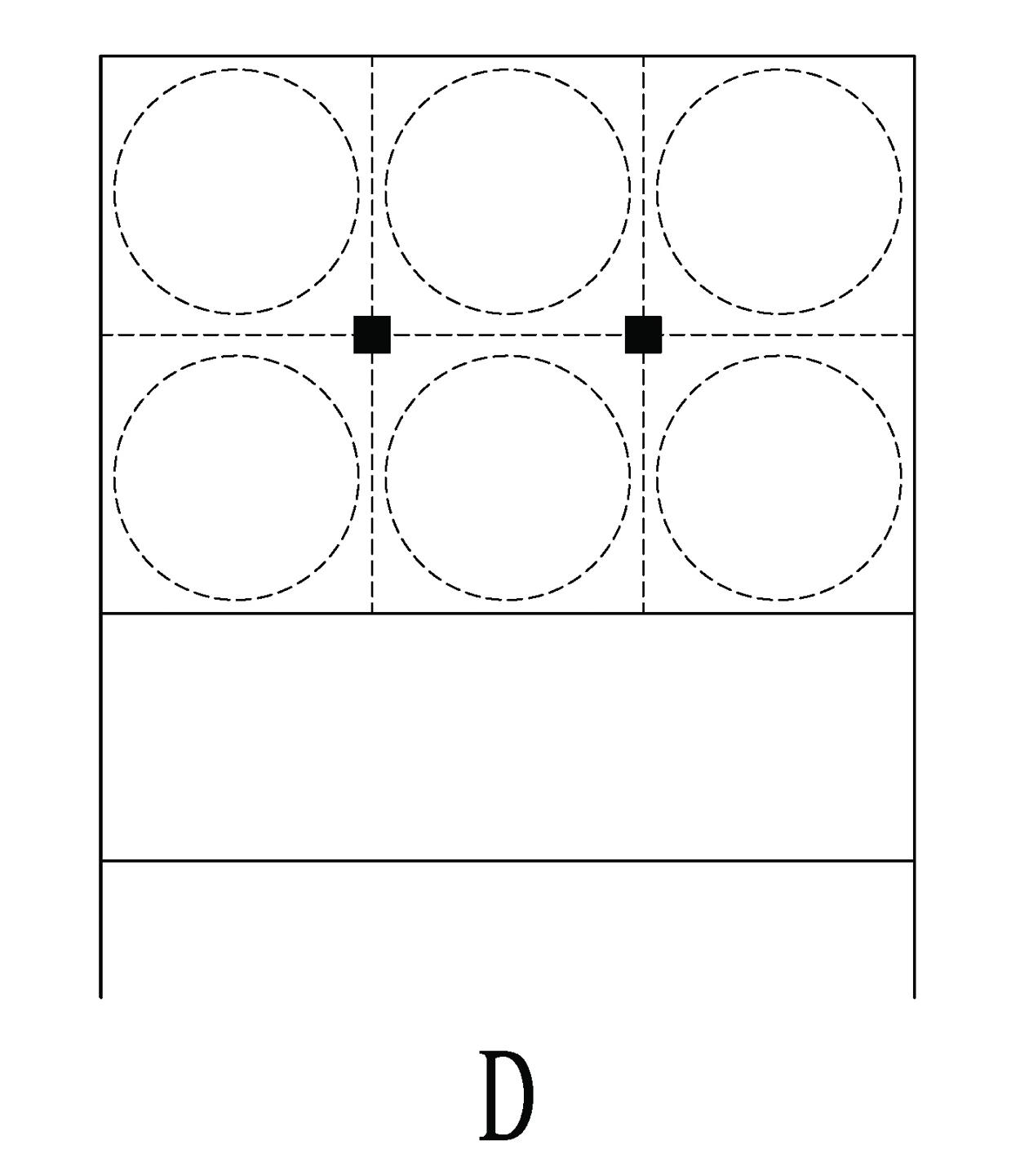
Type (D): Hot Room with Multiple Domes
In this type of planning, the hot room is divided into equal parts via arches and each of these parts is covered with a dome. The arches in the center are carried by two columns. This planning does not have a göbek taşı (marble stone) under the big dome. The Haseki Hammam close to the Yeni Cami (New Valide Sultan Mosque), which was among the rare examples of this planning, was destroyed.
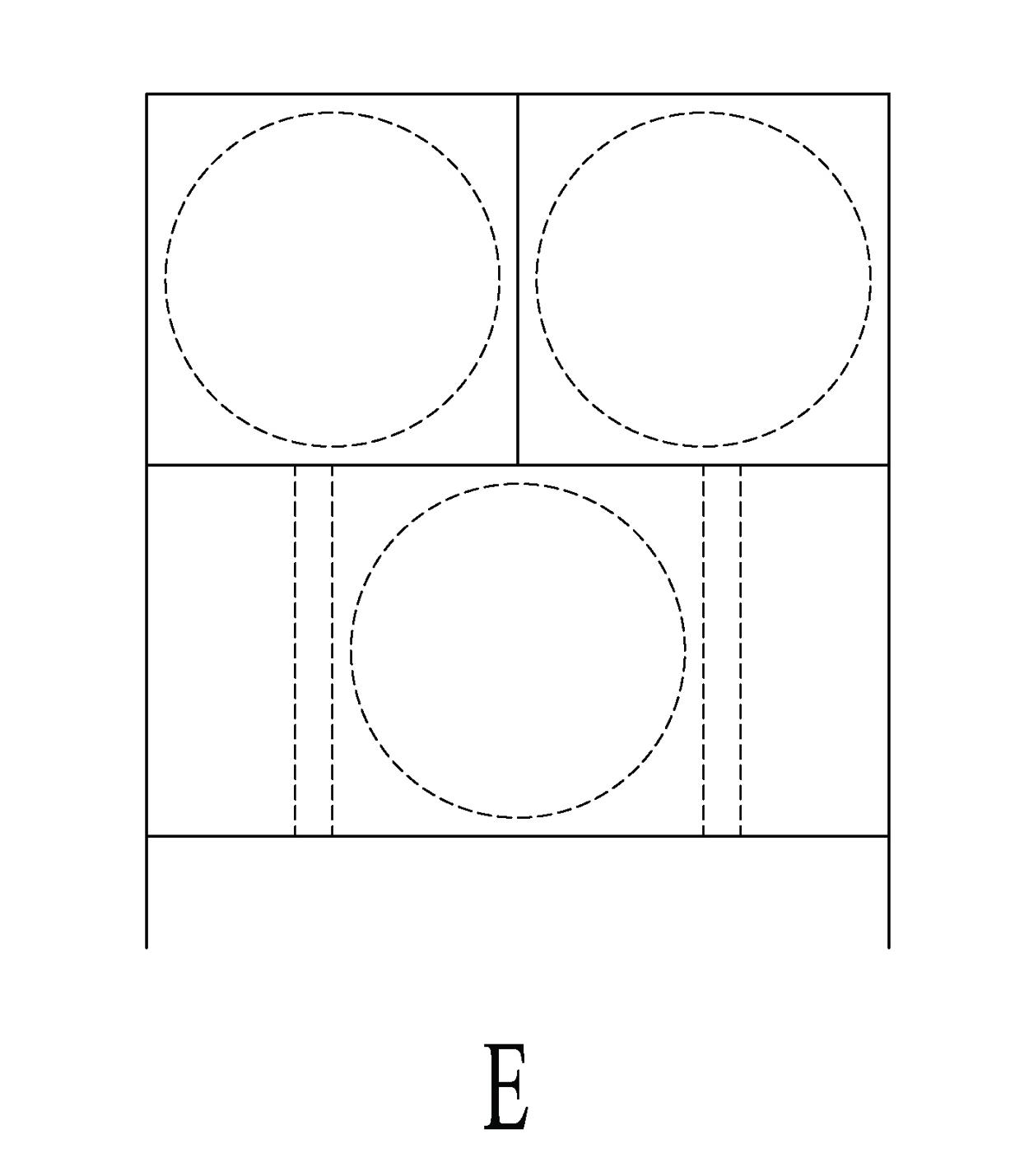
Type (E): Transverse Hot Room with a Central Dome and Double Halvet Cells:
This planning is composed of a transverse hot room, divided with two arches and with walls covered with plain vault as well as a pair of halvet cells opening to the hot room through doors. The common feature of this type of hammams is the mihrab-shaped niche, on the wall between the doors of the halvet cells.
The Çukurçeşme Hammam, the women’s part of the Tahtakale Hammam, the women’s part of the Azapkapı Hammam, the İbrahim Paşa Hammam, the Ahmet Ağa Hammam and the Balat Hammam might be the examples of this type.

Type (F): Equal Size Hot, Cool and Halvet Rooms
This type of planning is used in small scale public and private hammams. These hammams are designed as domed rooms of almost equal size, and each room is connected to one another. There is no example of this type in Istanbul.26
Naturally, the structural examples given above in relation to the classifications, does not cover all the hammams constructed in Istanbul, they are listed to give an idea to the researchers for further studies.
Consequently, hammams, which have begun to be considered as tourist attractions in the present day, were indispensable parts of social life in the periods when there were no baths in the houses. The hammams, crucial for personal hygiene in history, had a particular importance in every civilization. Nevertheless, it was the Roman and Turkish hammam structures that were the most developed and the most commonly used ones. The heating system developed by the Romans, was improved during the constructions of what is defined as Turkish hammams, and they became common within the periods of pre-Ottoman Anatolian civilizations and the Ottoman Empire. Some of the technical problems of hammams were solved in Istanbul in the Ottoman period, and several hammams as indispensable structures were constructed throughout the city.

In parallel with the changes in social life, as hammams began to provide less profit, new hammams were not constructed and former ones began to be destroyed. In addition to the profit factor, new construction works led to the complete or partial destruction of hammams, which bore the features of an art work. During the Byzantine and Ottoman periods, in cases of scarcity of water and heating materials, some of the Istanbul hammams were destroyed. In the twentieth century, the hammams lost their functions, and new construction work increased in the city, which easily led to the elimination of hammams. As an example, Istanbul Governor Cemil Topuzlu Paşa attempted to destroy the Sultanahmet Haseki Hürrem Sultan Hammam, but was averted in the last minute. Nevertheless, the Aksaray Murat Paşa Hammam, the Fındıklı Hammam, the Beşiktaş Sinan Paşa Hammam, the Saraçhane Çandarlı İbrahim Paşa Hammam, the Laleli Kızlarağası Hammam and the Sirkeci Küçükağa Hammam were demolished with the justification of road construction. The Beyazıt Hammam, on the other hand, ended up being above the road elevation during the road construction, and the structure remaining with a hallow ground got off lightly from the demolition work. Today, some of the hammams have been restored with touristic purposes and serve their genuine functions. Apart from them, there are also hammams, which have lost their functions and are used for different purposes.
The hammams, having a considerable role in the daily lives, brought about a culture along with them, and different concepts, relating to a wide range of areas from people working to conversations peculiar to hammams, were produced. In the hammams of Istanbul, people would not only have a bath but also have entertainment and fun. That Istanbul was the capital city, and the number of the hammams was quite high, created a rich hammam culture. Until recently, it was a traditional event to go to the hammams in groups, and they served as places where mothers would look for an appropriate girl for their sons. It was also a tradition among the men to go to the hammams at Thursday night, Friday mornings and the eves of the eids. The women serving in the women’s hammam were called “natir” (rubber), whereas men working in the men’s hammam were called “tellak” (rubber/bath attendant). In addition to them, there were a group of people “külhancı, meydancı, peştamalcı, çıkmacı, kahveci” called serving in the hammams as well.27 Hammams in the big cities were also places where poets would come together especially in winters and had discussions on poetry. The poems, on hammams, in the classical Turkish poetry are called “hamamiye”, and poems constituting a single work on their own are named as “hamamnâme”28 As for the examples of these poems, the writings on the tiles of the walls of the İstanbul Çinili Hammam might be given.
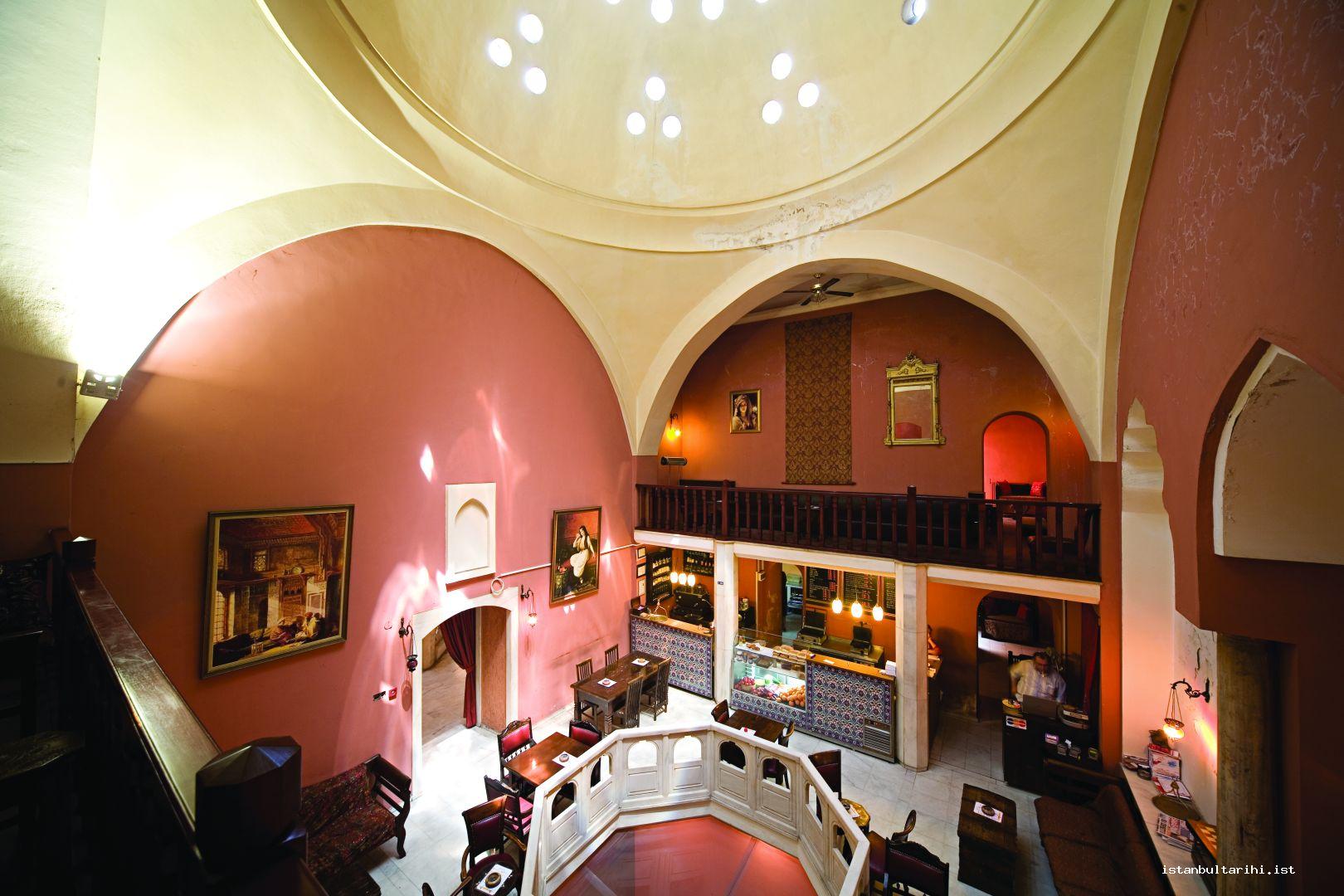
As mentioned above under the title of “Istanbul Hammams, hammams, examples of which might be seen in other cities as well, functioned and still continues to function as sites, witnessing new peculiar architectural works and contributing considerably to the cultural life of the society.
FOOTNOTES
1 Seda Kula Say, “Erken Dönem Osmanlı Hamamlarında Eğrisel Örtüye Geçiş Sistemleri” (MA thesis), İstanbul Teknik Üniversitesi, İstanbul, 2007, p. 52.
2 Ali Saim Ülgen, “Hamam (Hammam)”, İA, vol 5/1, pp. 174-178.
3 Wolfgang Müller-Wiener, İstanbul’un Tarihsel Topoğrafyası, tr. Ülker Sayın, Istanbul: Yapı Kredi Yayınları, 2001, p. 48.
4 Semavi Eyice, “Hamamlar (Hammams)”, DBİst.A, vol. 3, 537-542.
5 Müller-Wiener, İstanbul’un Tarihsel Topoğrafyası, pp. 50-51.
6 Paul Magdalino, Ortaçağda İstanbul: Altıncı ve On Üçüncü Yüzyıllar Arasında Konstantinopolis’in Kentsel Gelişimi, tr. Barış Cezar, Istanbul: Koç Üniversitesi, 2012.
7 Müller- Wiener, İstanbul’un Tarihsel Topoğrafyası, p. 48.
8 Paul Magdalino, “Church, Bath and Diakonia in Mediaval Constantinople”, Church and People in Byzantium, ed. R. Morris, Birmingham: Centre for Byzantine, Ottoman and Modern Greek Studies and University of Birmingham, 1990, pp. 165-188.
9 Eyice, “Hamamlar”, DBİst.A, III, 538.
10 Eyice, “Hamamlar”, DBİst.A, III, 538.
11 Müller-Wiener, İstanbul’un Tarihsel Topoğrafyası, p. 325.
12 Alidost Ertuğrul, “Mimar Sinan’ın İstanbul’daki Mevcut Hamamları” (MA Thesis), İstanbul Teknik Üniversitesi, İstanbul, 2002.
13 Bahaettin Yediyıldız, “Vakıf Müessesesinin XVIII. Asır Türk Toplumundaki Rolü”, VD, 1982, no. 14 (1982), pp. 1-13.
14 Semavi Eyice, “İznik’de Büyük Hamam ve Osmanlı Devri Hamamları Hakkında Bir Deneme”, TD, 1960, vol. 11, no. 15, pp. 99-120; Yılmaz Önge, Anadolu’da XII-XIII. Yüzyıl Hamamları, Ankara: Vakıflar Genel Müdürlüğü, 1995.
15 Süleyman Beyoğlu, “Osmanlı Deniz Hamamları”, Yakın Dönem Türkiye Araştırmaları Dergisi, no. 5 (2004), pp. 53-73.
16 Yılmaz Önge, “Anadolu Türk Hamamları Hakkında Genel Bilgiler ve Mimar Koca Sinan’ın İnşa Ettiği Hamamlar”, Mimarbaşı Koca Sinan Yaşadığı Çağ ve Eserleri, ed. Sadi Bayram, II vol., Istanbul: Vakıflar Genel Müdürlüğü, 1988, vol. 1, pp. 403-428.
17 Önge, “Anadolu Türk Hamamları Hakkında Genel Bilgiler, pp. 403-428.
18 Önge, “Anadolu Türk Hamamları Hakkında Genel Bilgiler”, pp. 403-428.
19 Semavi Eyice, “Hamam”, DİA, vol. 15, 402-430.
20 Eyice, “İznik’de Büyük Hamam”, pp. 99-120.
21 Önge, “Anadolu Türk Hamamları Hakkında Genel Bilgiler”.
22 Eyice, “İznik’de Büyük Hamam”, pp. 99-120.
23 Önge, “Anadolu Türk Hamamları Hakkında Genel Bilgiler.
24 Yılmaz Önge, “Koca Sinan’ın Hamamlarında Görülen Bir Yenilik: Merkezi Kubbeli Örtü Sistemleri” II. Uluslararası Türk -İslam Bilim ve Teknoloji Tarihi Kongresi, 28 Nisan - 2 Mayıs 1986, Bildiriler, II vol., Istanbul: İstanbul Teknik Üniversitesi Bilim ve Teknoloji Tarihi Araştırma Merkezi, 1986, vol. 2, pp. 81-86.
25 Eyice, “İznik’de Büyük Hamam”, pp. 99-120.
26 Eyice, “İznik’de Büyük Hamam”.
27 Mustafa Uzun and Nurettin Albayrak, “Hamam”, DİA, vol. 15, pp. 431-433.
28 Uzun and Albayrak, “Hamam”, vol. 15, p. 432.
